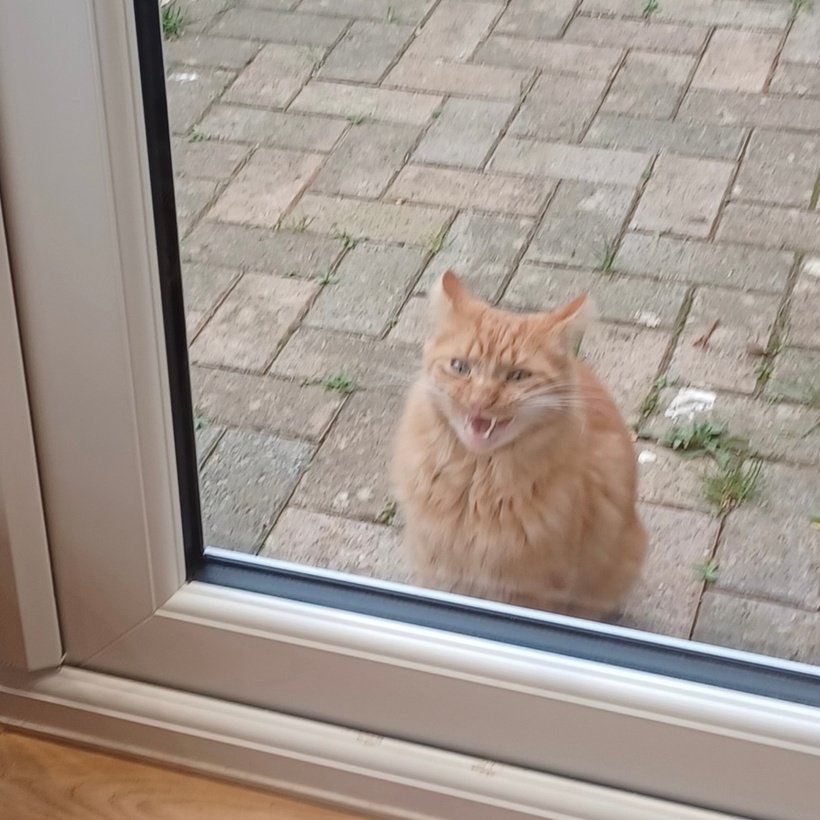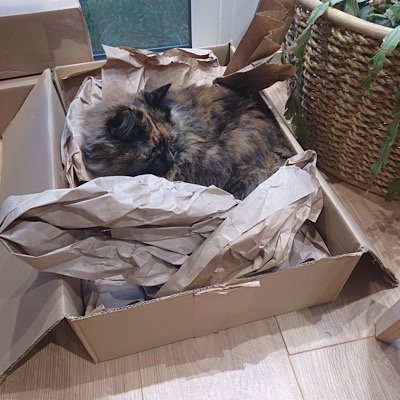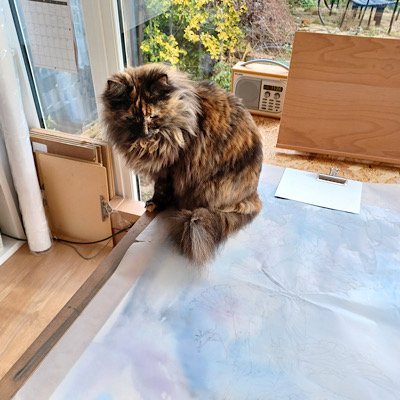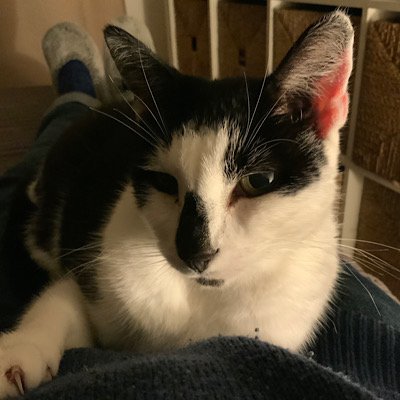How to manage a studio cat
I have noticed that the number of cat-owning artists seems to be quite high, at least among my friends! Cats and art don’t always go well together, especially if your cat happens to be the nosey kind who needs constant attention. Or perhaps you have a cat that has access to outdoors, and likes to clean their mucky paws on that lovely fresh (expensive!) watercolour paper you just stretched.
Cats shed fur, sharpen their claws, yowl, chew stuff, and seem to have Houdini-like powers when it comes to getting through the studio door.
Across the globe, artists cry “why did I get a cat?!” as their beloved felines stick their claws through another canvas, drink the brush water, or chew up the charcoal. The answer is clear: cats are cute.
So cute they tend to get away with just about everything. There are ways for artists to live alongside these floofy demons, however. Read on for some tips…
Beds are everything. Cats sleep anywhere, any table, any chair… as cat expert and poet Eleanor Farjeon wrote. Unfortunately, ‘anywhere’ also means on your almost dry painting, on the flowers you just brought inside to sketch, in the box where you keep your best pastels, and worst of all on the chair you like to sit on as your work.
How does an artist cope?! One way is to sacrifice the chair, and use backup seating. Another is to provide the kind of bed your cat likes best. This might be as simple as a cushion next to a radiator or in a sunny spot.
Some cats like the crackle of paper under them, and will chill out for hours in a box of packing materials.
Providing a good view is even better.
If your cat is particularly sociable and you have space, a bed on top of your desk could be the best arrangement.
(Note the tracing paper protecting my artwork, because however often I turf Hecate off my table she just keeps on sitting up there)
What about the cats that just won’t settle, though? Entertainment is key. I mentioned a good view above, preferably with birds or some other item of interest to watch. Moving rainbow makers or laser toys are also helpful for overly active kitties, or try hanging ribbons from the back of your chair, the ceiling or doorframe. Keep a couple of spare toys at hand as well, for impromptu play sessions.
Cats are exceedingly curious, so be aware if anything within their reach that you don’t want them to explore. Putting up some shelves that are inaccessible, either because they are too high or too full for a cat to jump on, is crucial.
This brings me to the reason why your cat might be interrupting your studio time: love. They love you, and your attention. So make sure they get plenty of your loving attention before you settle down to create. Most cats will respond well to some playtime, followed by food of some kind, and a cuddle.
This mimics the way they would hunt, eat, clean, and sleep in the wild, and will usually leave you with a couple of hours for creating whilst your purring buddy keeps you company in the best way.
Have I missed anything? What do your cats get up to in your studio?
Love from
Alaina, Mucha, Hecate, and Loki xxx










